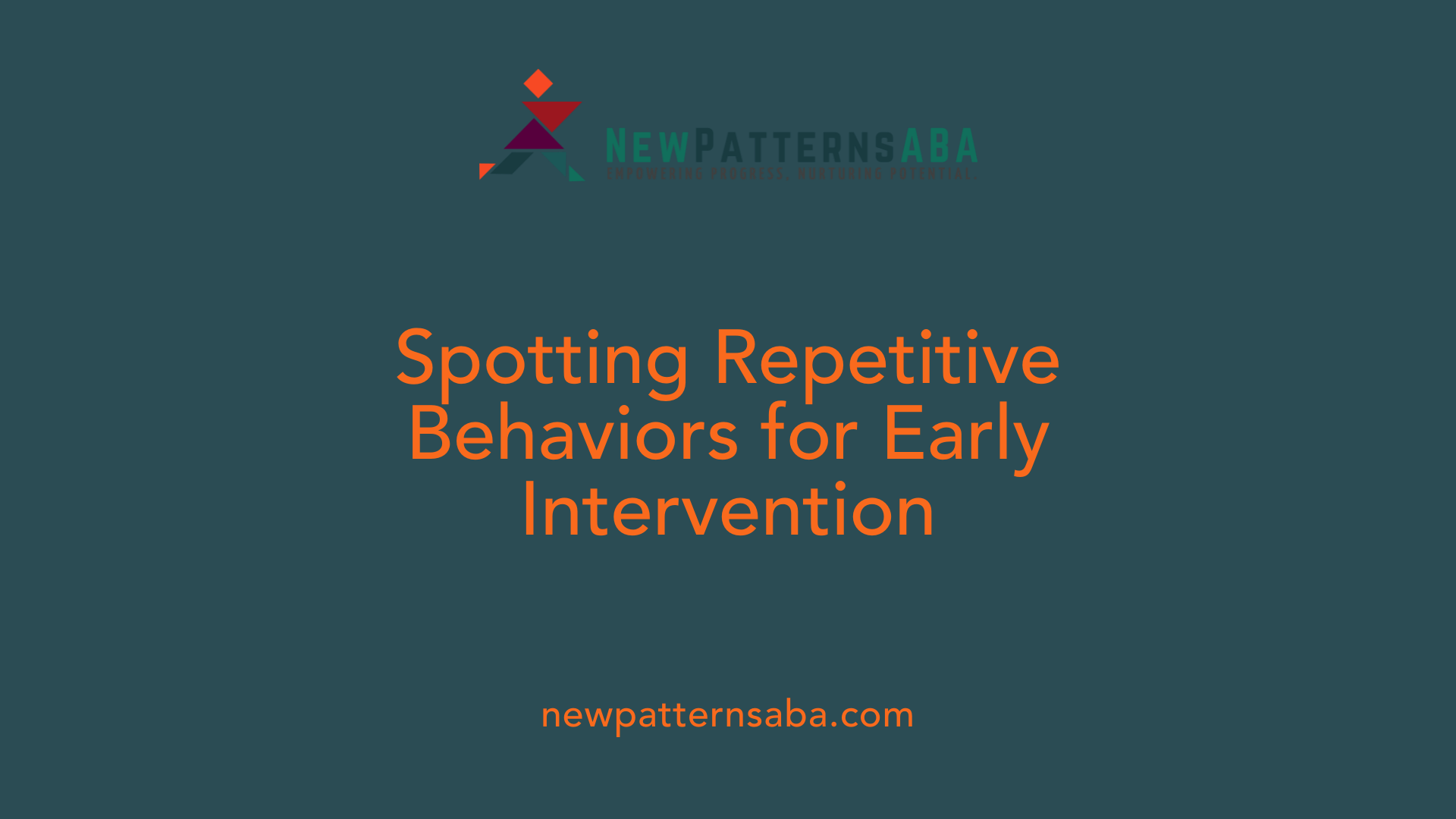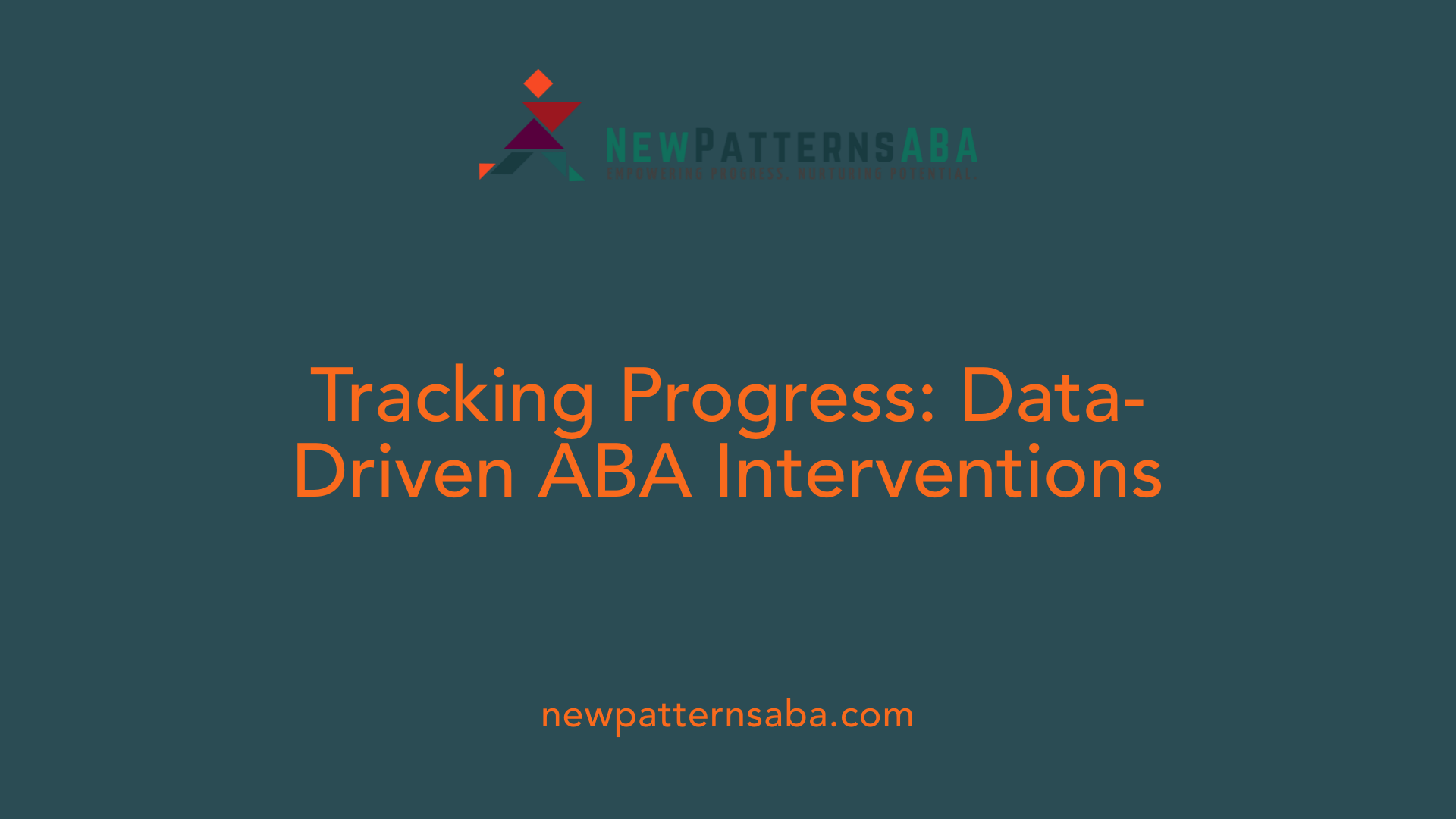Understanding Autism Early: Why Educators Play a Key Role
Early identification of autism spectrum disorder (ASD) in children is critical, as timely intervention can significantly enhance developmental outcomes. Educators, often among the first professionals to observe young children's social and communication behaviors regularly, play a pivotal role in recognizing early signs of autism. This article explores the behavioral and developmental indicators that educators should watch for between 12 and 24 months and beyond, outlining how these signs manifest and the benefits of early assessment and intervention through evidence-based therapies like Applied Behavior Analysis (ABA).
Early Developmental and Behavioral Signs of Autism in Young Children

Delayed Speech and Language Development
Children with autism often experience delays in speech and language milestones. They may not babble by 12 months, struggle to speak by 18 months, or exhibit echolalia — the repetition of words or phrases. Language use may also be inconsistent, especially under stress.
Limited Eye Contact and Social Smiles
Young children on the autism spectrum commonly show limited eye contact during interactions. Social smiles may be infrequent or absent, affecting their ability to engage socially and communicate emotions.
Resistance to Routine Changes and Tantrums
Changes in routines can cause distress, marked by tantrums or meltdowns. This resistance to change reflects underlying anxiety or difficulty adapting, typical of many children with autism.
Repetitive Behaviors Such as Hand-Flapping and Rocking
Repetitive motor behaviors, including hand-flapping, rocking, spinning objects, or unusual body movements, are often observed. These behaviors range from simple repeated motions to more complex ritualistic patterns.
Fixations on Specific Interests
Children may develop intense, narrow interests in particular objects or themes, such as trains or dinosaurs. These fixations can be consuming and may guide play preferences.
Sensory Sensitivities Including Reactions to Sounds and Lights
Many children with autism show hypersensitivity or hyposensitivity to sensory stimuli. Examples include adverse reactions to loud noises, bright lights, or certain textures, while others seek deep pressure or show reduced response to pain.
Unusual Play Patterns and Atypical Gestures
Play may differ from typical developmental norms, such as using toys in unconventional ways or showing limited pretend play. Gestures like pointing to share interest may be delayed or absent.
Failure to Respond to Name and Lack of Joint Attention
A common early sign is not responding to their name after repeated calls and difficulty establishing joint attention, such as following gaze or pointing to objects, which hinders social communication development.
Social Interaction and Communication Challenges to Note
Social Interaction Difficulties
Children with autism often show limited interest in interacting with peers. They may prefer solitary activities and not seek out social games, reflecting challenges in peer engagement. This preference highlights their difficulty in social interaction.
Understanding and Using Social Cues
Autistic children frequently struggle with interpreting and responding to social cues. They may have trouble making or maintaining eye contact during conversations, an important aspect of social engagement. Additionally, they often avoid physical contact and show limited social smiling, which can hinder typical social bonding.
Vocalizations and Gestures
Delayed speech and language development are common, with some children exhibiting echolalia—repeating words or phrases without meaningful interaction. Unusual vocalizations like monotone humming can also occur. Gestures like pointing to draw attention to objects are often limited or absent, diminishing non-verbal communication.
Recognizing Emotions and Preferences
Another challenge is recognizing facial expressions and emotions in others, which impacts their social understanding. Autism also often involves a preference for solitary play over engaging with other children, reducing opportunities for social learning.
Response to Name and Social Attention
Children with autism may not respond consistently to their name or to calling, indicating atypical social attention and reduced awareness of social interactions. This non-responsiveness further complicates communication and connection with others.
Repetitive and Restrictive Behaviors as Indicators

What Are Repetitive Motor Movements in Autism?
Children with autism often exhibit repetitive motor behaviors, which include hand-flapping, rocking, and spinning objects. These repetitive motions can range from subtle to conspicuous and are considered a hallmark of autism spectrum disorder (ASD). Such behaviors are believed to provide sensory input or self-soothing effects for the child.
How Do Children with Autism Respond to Changes in Routine?
Many autistic children show strict adherence to routines and may become distressed if these are disrupted. Resistance to change can result in tantrums or meltdowns, signaling anxiety or discomfort. This need for consistency helps them feel secure but can limit flexibility in daily activities.
What Does Intense Focus Look Like in Autism?
Children on the spectrum frequently develop intense interests, fixating on specific objects or topics, such as trains or dinosaurs. This focused attention differs from typical play and can be a source of enjoyment and comfort.
How Is Play Different in Autistic Children?
Atypical play behaviors in autistic children may include using toys in unconventional ways or showing little interest in imaginative or pretend play. They might engage repetitively with certain objects, using them for extended periods, reflecting their unique interaction with their environment.
What Sensory Processing Differences Are Common?
Sensory sensitivities are prevalent and may manifest as hypersensitivity—over-reacting to sounds, lights, or textures—or hyposensitivity, such as seeking deep pressure or being unresponsive to pain. These sensory processing differences can significantly affect daily functioning and behavior.
| Behavior Type | Description | Examples |
|---|---|---|
| Repetitive Motor Movements | Repeated physical actions used for sensory input or calming | Hand-flapping, rocking, spinning objects |
| Strict Routine Adherence | Need for predictability and distress when routines change | Tantrums or meltdowns upon schedule changes |
| Intense Focus/Interests | Deep fixation on specific topics or objects | Obsession with trains, dinosaurs |
| Atypical Play | Unconventional use of toys and lack of pretend play | Using toys repetitively, avoiding make-believe |
| Sensory Processing Differences | Hypersensitivity or hyposensitivity to sensory stimuli | Reacting strongly to loud noises, seeking pressure |
These behaviors, when observed together with other developmental signs, can help caregivers and professionals identify autism early and guide appropriate interventions.
The Importance of Early Diagnosis and Intervention
What is the typical age range for early signs of autism?
Early signs of autism generally appear between 12 and 24 months of age. During this period, parents and caregivers might notice behaviors such as delayed speech development, limited eye contact, repetitive movements, difficulty responding to their name, and resistance to changes in routine. Recognizing these early indicators is crucial for timely assessment and support.
What tools and methods are used for early screening and diagnosis?
Informal screening tools like the Modified Checklist for Autism in Toddlers (M-CHAT) are commonly used during routine pediatric visits around 18 and 24 months. In addition to screening questionnaires, diagnosis relies heavily on developmental history reviews, direct observation of the child’s behavior, and standardized assessments conducted by specialists. These multimodal approaches help ensure an accurate diagnosis.
Why is diagnosing autism before age two beneficial?
Diagnosing autism before the age of two is highly advantageous because it allows for earlier access to intervention services. Early diagnosis takes advantage of neural plasticity, meaning the young brain’s capacity to adapt and learn is higher, enhancing the effectiveness of therapy. Timely identification helps prevent behaviors from becoming deeply ingrained and supports better developmental trajectories.
How does early diagnosis improve access to therapies and support?
Once diagnosed, children can begin therapies such as Applied Behavior Analysis (ABA), speech therapy, and parent-led developmental interventions. Early access to these supports improves communication, social interactions, and adaptive behaviors. Families also receive guidance and training to help reinforce skills in natural settings, ensuring consistent developmental support.
What is the long-term impact of early intervention?
Early intervention has been shown to improve intellectual functioning, daily living skills, and social functioning in children with autism. By addressing challenges early, children gain greater independence and a better quality of life. Research-backed therapies initiated soon after diagnosis yield more significant and lasting benefits compared to later treatment starts.
Applied Behavior Analysis (ABA) Therapy Explained
What is Applied Behavior Analysis (ABA) therapy?
Applied Behavior Analysis (ABA) therapy is a scientifically grounded approach focused on understanding and modifying behavior by analyzing how the environment influences responses. It aims to increase helpful behaviors such as communication, social skills, and daily living abilities, while reducing harmful or problematic behaviors, especially in children with autism spectrum disorder (ASD).
How does ABA focus on behavior-environment interactions?
ABA centers on the ABCs of behavior: Antecedent, Behavior, and Consequence. By observing what happens before a behavior (antecedent) and what follows it (consequence), therapists can identify patterns and design interventions that promote positive behavior change.
What are the goals of ABA therapy?
The primary goals include:
- Increasing useful and adaptive behaviors
- Reducing behaviors that interfere with learning or social interaction
- Teaching new skills across areas like communication, social interaction, self-care, and play
How are treatments personalized and structured?
Programs begin with detailed assessments conducted by a Board Certified Behavior Analyst (BCBA). These evaluations set individualized goals tailored to a child's unique needs. Treatment involves structured sessions with ongoing data collection and progress monitoring, allowing adjustments as needed.
Which techniques are commonly used in ABA?
ABA employs various evidence-based techniques, including:
- Discrete Trial Training (DTT): Breaks skills into small steps and teaches them systematically.
- Pivotal Response Treatment (PRT): Targets pivotal developmental areas to produce widespread improvements.
- Early Start Denver Model (ESDM): Integrates behavioral and developmental approaches for very young children.
Through these methods, ABA therapy offers flexible interventions that can be delivered at home, school, or clinics, involving caregivers in the process for consistent support.
This scientifically supported approach has been shown to improve intellectual functioning, language skills, and social functioning, making ABA a cornerstone treatment that maximizes developmental potential in children with autism.
Who Provides ABA Therapy and Their Qualifications

Roles of Board Certified Behavior Analysts (BCBAs) and Registered Behavior Technicians (RBTs)
ABA therapy is primarily delivered by two types of professionals: Board Certified Behavior Analysts (BCBAs) and Registered Behavior Technicians (RBTs). BCBAs are responsible for designing individualized treatment plans, conducting detailed assessments, and monitoring progress. RBTs implement these treatment sessions directly with children under the close supervision of a BCBA.
Educational and Certification Requirements for BCBAs
BCBAs hold graduate-level degrees with specialized coursework in behavior analysis. They complete extensive supervised fieldwork before passing a rigorous certification exam to earn their BCBA credential. This formal training equips them to develop data-driven plans addressing communication, social skills, self-care, and other developmental areas.
Training and Supervision Between BCBAs and RBTs
RBTs are trained paraprofessionals who undergo specific instruction and pass a certification to apply ABA methods. However, they do not independently create treatment plans. Instead, they work under the supervision and guidance of a BCBA, who ensures fidelity to the therapy goals and adjusts intervention strategies as needed.
Other Professionals Involved
Besides BCBAs and RBTs, ABA therapy may involve clinicians with backgrounds in psychology, speech therapy, or occupational therapy who have additional training in applied behavior analysis. Their multidisciplinary expertise can complement ABA interventions.
Importance of Verifying Provider Credentials and Experience
Families seeking ABA therapy should verify the credentials of providers, including BCBA certification status, experience working with children with autism, and the supervision model in place. This ensures that therapy is evidence-based, tailored, and delivered with clinical oversight to maximize developmental benefits.
Techniques Commonly Used in ABA Therapy to Support Children with Autism
What Are the Common Techniques Used in ABA Therapy?
ABA therapy employs several effective techniques tailored to help children with autism develop essential skills and reduce challenging behaviors.
Discrete Trial Training (DTT): This structured approach breaks down skills into small, manageable components, reinforcing correct responses with immediate rewards. It is highly effective for teaching new behaviors in a controlled setting.
Natural Environment Teaching (NET): In contrast to DTT, NET occurs within natural settings, encouraging children to learn through everyday interactions and activities, making learning more practical and engaging.
Task Analysis and Behavior Chaining: Complex tasks are divided into sequential steps. Each step is taught individually, with the child gradually learning to perform the entire sequence independently.
Positive and Negative Reinforcement: Reinforcement methods are fundamental in ABA. Positive reinforcement involves giving rewards—such as praise, toys, or preferred activities—to encourage desirable behavior. Negative reinforcement reduces unpleasant stimuli to promote behavior.
Prompting and Fading Strategies: Therapists use prompts (verbal, gestural, or physical) to guide the child toward correct responses. Over time, these prompts are gradually faded to promote independence.
Modeling and Video Modeling: Demonstrating the desired behavior, either live or through video, helps children imitate and learn social and communication skills.
Functional Communication Training (FCT): This method teaches alternative and appropriate communication skills to replace challenging behaviors, helping children express needs effectively.
Use of Visual Aids Like PECS: Picture Exchange Communication System (PECS) and other visual supports help nonverbal children communicate their needs and preferences.
Together, these techniques create a comprehensive, individualized ABA program that addresses communication, social skills, behavior management, and daily living skills. Regular assessments by certified analysts help tailor interventions and track progress effectively.
Measuring and Monitoring Progress in ABA Therapy

How is the progress of ABA therapy measured?
Progress in ABA therapy is measured through a structured and multifaceted approach that hinges on precise data collection and ongoing analysis. Therapists employ systematic methods to observe and record behaviors, ensuring that improvements and challenges are clearly documented.
Systematic Data Collection Methods
Behavior tracking involves direct observation where behaviors are quantified by frequency (how often a behavior occurs), duration (how long it lasts), and latency (time taken to initiate a behavior). These objective metrics offer clear insights into behavioral changes over time.
Direct Observation and Measurement Techniques
Trained therapists use specific measurement techniques during therapy sessions to capture real-time behavioral data. For example, frequency counts may be used to monitor how many times a child initiates social interaction, while duration measures track the length of attention span during tasks.
Standardized Assessments such as VB-MAPP
Tools like the Verbal Behavior Milestones Assessment and Placement Program (VB-MAPP) provide an evidence-based framework to assess language and social milestones. These standardized tests help benchmark the child’s skills against developmental norms and guide goal setting.
Caregiver Questionnaires and Feedback
Parental input through questionnaires and informal feedback complements observational data. This provides a broader view of the child’s behavior across different environments and daily routines, ensuring that progress is not confined to the therapy setting alone.
Using Graphs and Progress Reports
Visual representation of data such as graphs and progress reports is integral. These allow therapists and families to track trends, celebrate successes, and pinpoint areas needing adjustment. Clear documentation fosters transparency and keeps everyone informed.
Treatment Plan Adjustments Based on Data
Continuous data analysis supports evidence-based decision making. When data signals plateauing or regression, treatment plans are refined to match evolving needs, ensuring therapy remains effective and personalized.
Role of Regular Reviews and Collaboration
Regular interdisciplinary reviews involving therapists, caregivers, and sometimes other professionals encourage collaborative goal evaluation and strategizing. This sustained communication ensures that therapy remains aligned with the child’s growth and changing needs.
The combination of rigorous data collection, standardized assessments, and stakeholder collaboration creates a dynamic feedback system that supports meaningful progress in ABA therapy.
Additional Therapies Complementing ABA for Holistic Support
What Other Therapies Support Children with Autism Besides ABA?
Applied Behavior Analysis (ABA) is a cornerstone therapy for autism, but a holistic approach often includes several complementary therapies.
Parent-led Relationship Development Intervention (RDI)
RDI is a family-centered approach focusing on building social and emotional skills through guided interactions between parents and children. It empowers parents to support their child's social development naturally in daily life.
Speech and Language Therapy
Communication challenges such as delayed speech and echolalia are common in autistic children. Speech therapy helps improve both verbal and non-verbal communication, enabling children to express needs and engage socially with greater confidence.
Physical Therapy and Occupational Therapy
These therapies address motor skills, coordination, and sensory processing issues. Occupational therapy especially aids children in managing sensory sensitivities and developing daily living skills for greater independence.
Arts Interventions
Creative therapies like music, dance, and art provide non-verbal outlets for expression and improve social interaction skills in an enjoyable, motivating setting.
Nutritional Services
Some children with autism have dietary sensitivities or nutritional needs. Dietitians can assist families in managing these challenges to support overall health and behavior.
The Importance of Multidisciplinary Support Teams
The combined expertise of behavior analysts, speech therapists, occupational therapists, and medical professionals ensures that all areas of a child's development are addressed collaboratively. This coordinated support is crucial for maximizing progress and tailoring interventions to individual needs.
Role of Educators in Early Identification and Support

Observing and Documenting Early Signs in Classroom Settings
Educators play a crucial role in noticing early signs of autism, such as limited eye contact, delayed speech, repetitive behaviors, and difficulty responding to name. Careful observation and documentation help track behaviors like resistance to routine changes or unusual play, which can indicate autism or related concerns. Early detection in the classroom can prompt timely referrals for professional screening.
Collaborating with Parents and Specialists for Screening
Teachers often serve as a bridge between families and specialists. By sharing observations with parents and recommending developmental screenings, educators contribute to early diagnosis. Coordination with behavioral analysts, speech therapists, or developmental pediatricians ensures children receive comprehensive evaluations and tailored interventions.
Understanding Co-occurring Conditions Like ADHD and Anxiety
Autistic children frequently experience co-occurring challenges, such as ADHD or anxiety, which impact behavior and learning. Educators aware of these overlapping conditions can implement strategies to manage impulsivity, reduce tantrums, and support emotional regulation, improving the child's overall classroom experience.
Creating Supportive Environments to Reduce Distress from Sensory Sensitivities
Children with autism may be hypersensitive to loud noises, bright lights, or textures. Schools can create sensory-friendly spaces or routines that minimize overwhelming stimuli. Flexible scheduling and calm corners help reduce meltdowns and promote comfort, allowing children to better engage with learning activities.
Facilitating Social Inclusion and Positive Peer Interactions
Since social interaction is often challenging, educators can encourage cooperative play, teach social skills, and foster peer understanding. Structured group activities and guided interactions build social competencies, reduce isolation, and enhance inclusion.
Encouraging Communication and Flexibility in Routines
Supporting children’s communication needs includes modeling language, using visual aids, and promoting alternative methods for expression. Gradual changes in routines paired with clear preparation can ease transitions, helping children adapt and reducing anxiety.
Educators, by combining these approaches, become vital advocates and facilitators of early support, positively impacting the developmental trajectory of children with autism.
Supporting Children with Autism from the Start
Educators equipped with knowledge of early autism signs can make a profound difference by identifying concerns promptly and facilitating early intervention referrals. Recognizing behaviors such as limited eye contact, delayed speech, repetitive movements, and sensory sensitivities between 12 and 24 months provides opportunities for timely assessment and support. Evidence-based treatments like ABA therapy, delivered by qualified professionals through personalized and measurable programs, offer effective strategies to build essential skills and reduce challenges. Alongside complementary therapies and a collaborative approach involving families and specialists, educators help lay the foundation for children with autism to thrive socially, academically, and emotionally. Early awareness and intervention are key to unlocking the full potential of every child on the spectrum.
References
- Early signs of autism—A guide for educators
- Early Signs of Autism: When to Start ABA Therapy
- Applied Behavior Analysis (ABA)
- Recognizing the Signs That Your Child May Need ABA ...
- Early Signs of Autism
- Common Autism Symptoms in Children | Divine Steps ABA
- Autism Spectrum Disorder (ASD) Symptoms & Causes
- 5 Signs Your Child Might Have Autism
- Applied Behavior Analysis (ABA)





